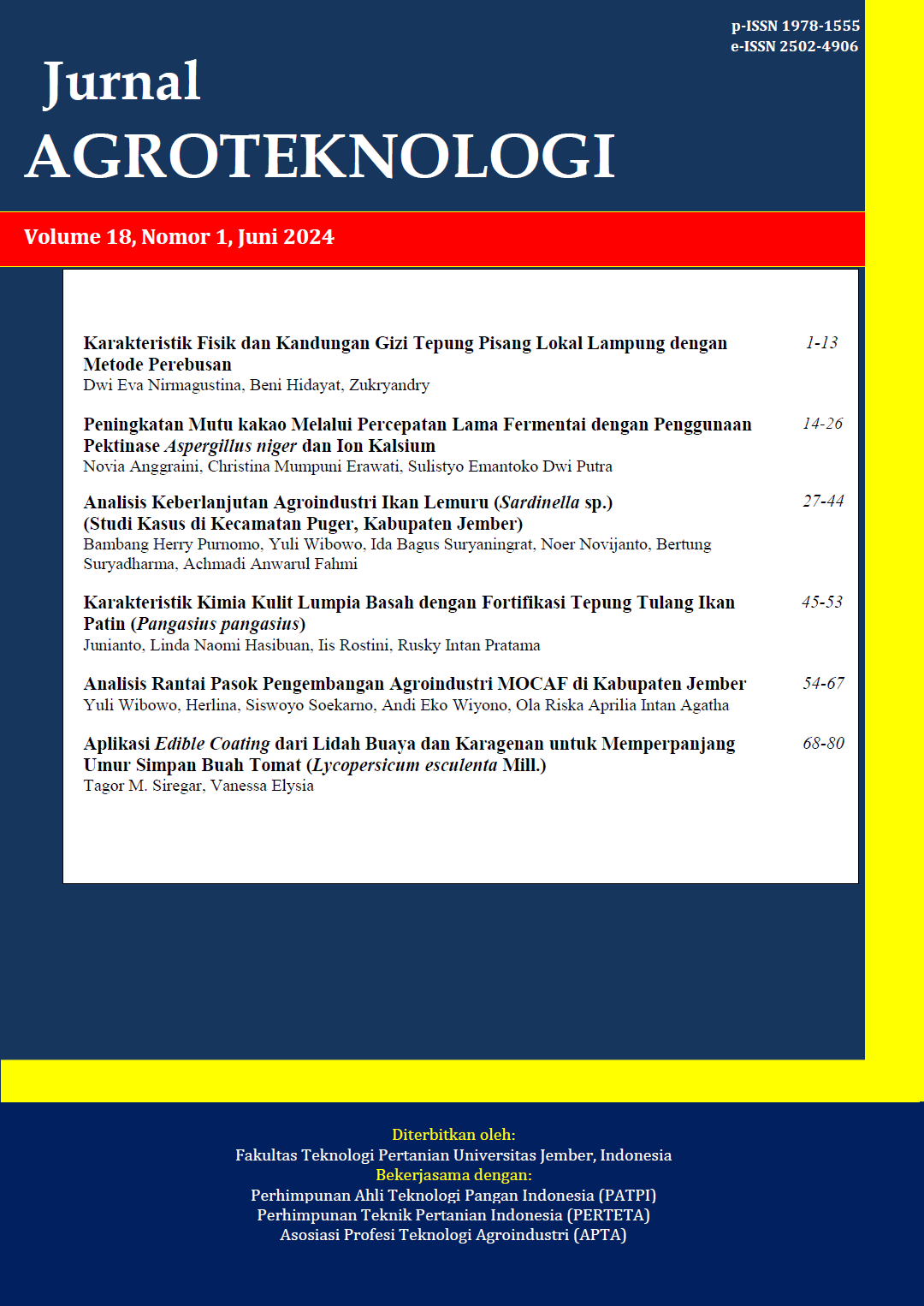Karakteristik Kimia Kulit Lumpia Basah dengan Fortifikasi Tepung Tulang Ikan Patin (Pangasius pangasius)
Chemical Characteristic of Wet Spring Roll Wrapper with Fortification of Patin Fish (Pangasiun pangasius) Bone Flour
Abstract
Waste from patin fish (Pangasius pangasius) consumption is skin and fish bone. Its waste generally used as a raw material for food and industrial products because of fat, gelatin, collagen, and calcium compounds. Based on its calcium compound, another food application is the fortification of patin fish bone on wet spring roll wrapper. It is important to increase the consumption rate of calcium nutrition. Therefore, this research aimed to improve the proximate composition (especially calcium) of wet spring roll wrapper with 6% catfish bone flour fortification. The method used in this research was experimental with two treatments, i.e. the addition of 6% patin fish bone flour (A1) and 0% patin fish bone flour (A0) as a control. The parameters observed were moisture, ash, fat, protein, carbohydrate, and calcium content. The test procedure for each parameter observed is based on SNI 01-2354:2006. Sample testing was carried out in duplicate. The proximate composition of wet spring roll wrapper fortified with 6% patin fish bone flour consists of moisture, ash, fat, protein, carbohydrate, and calcium content respectively 60.21%, 2.61%, 0,71%, 3.96%, 32.51%, and 19.90 mg/100 g. Wet spring roll wrapper that was fortified with 6% patin fish bone flour (A1) had higher calcium content (19.90 mg/100 g) compared to wet spring roll wrapper with no fortification (control/A0) of the patin fish bone flour (8.22 mg/100 g). The moisture content of this calcium-rich wet spring roll wrapper is included in the Indonesian National Quality Standard (SNI) number 2987-2015 for wet noodles. This wet spring roll wrapper is one of diversified product using fishbone fortification to increase its calcium content.
Keywords: fish bone, calsium, consumption, protein, waste

This work is licensed under a Creative Commons Attribution-ShareAlike 4.0 International License.
Jurnal Agroteknologi has CC-BY-SA or an equivalent license as the optimal license for the publication, distribution, use, and reuse of scholarly work. Authors who publish with this journal retain copyright and grant the journal the right of first publication with the work simultaneously licensed under a Creative Commons Attribution-ShareAlike 4.0 International License that allows others to share the work with an acknowledgment of the work's authorship and initial publication in this journal.
 JURNAL AGROTEKNOLOGI
JURNAL AGROTEKNOLOGI 










.png)

